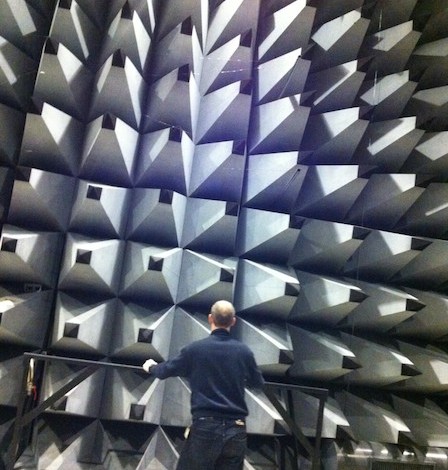It’s that time again. We’re making all kinds of progress (if you’re interested in what we’ve been working on these past few weeks, check out the past updates here) and have two people visiting our manufacturer (see the post on Yomura here).
Production
Our quality manager, Johan, and lead firmware engineer, Linus, have arrived in Taiwan! The purpose of their visit is to set up test stations that will be used in the production to make sure that the electronic functions are working perfectly and visit all the major suppliers: PCB supplier, SMT supplier, etc.
These test stations will consist of almost a half dozen of computers with special software, set up in different stages of the production supply chain. Some equipment connected to these are currently being built from scratch, for example a cabinet in which the camera module can be tested under consistent light conditions.
All of these sub-components and processes are in their final “tweaking” phase. Examples of this include, the packaging is all in its final form but the print is not finished. The electronics are being fine-tuned for the next build, which will be of a much greater quantity.
Yesterday, we spent a day at an FCC-accredited lab who are experts in certifications and measurements regarding electromagnetic interference and emissions from electronic products. All such products that are placed on the market have to be measured and certified that they comply with various regulations, for example according to the FCC in the US and the CE-marking regulations in Europe.
At least three aspects are usually tested:
- The device emissions of electromagnetic energy over a spectrum of 0 to 26 GHz (see the image of the room below)
- Resistance of injected electromagnetic energy through connectors, which in our case is the USB cable. The USB transfers should not be corrupted.
- Immunity of electrostatic discharges, such as static electricity buildups. Basically you shoot sparks of 2-8kV at the device from all directions and see if it withstands it.
In our case, most things look good, which was expected as the device is so small (and therefore a bad radiator anyway). We have an issue with the fundamental frequency of the USB2.0 connection leaking out a bit when connected with an USB cable, and we have to check if this is due to us or due to a substandard cable. Regardless, we will insert some more filters for this on the next production round and this shouldn’t produce any production problems.
In other news, we found and fixed an issue where the temperature charging-shutdown circuit was set at a trip-point that was too low, which had caused some of our previous hardware iterations to not charge the battery in full (our device is so small that any temperature-rise of the electronic circuits themselves also affect the thermometer that is supposed to check for battery heating).
Software and Backend
We have begun working on parts of the API that will help with keeping multiple devices synced. So, for example, if you delete a moment on one device, the other devices will update the other devices automatically. Regarding user experience, we are making great progress with the on-boarding process. Users will be able to get up and running in no time.
As usual, there is continued work on improving uploads and photo processing. We have also spent some time digging into MySQL (database) logs. This is something we need to keep an eye on as our tables and datasets grow. We began work on activity streams to make app sync better.
Have a wonderful weekend!
/Memoto team



